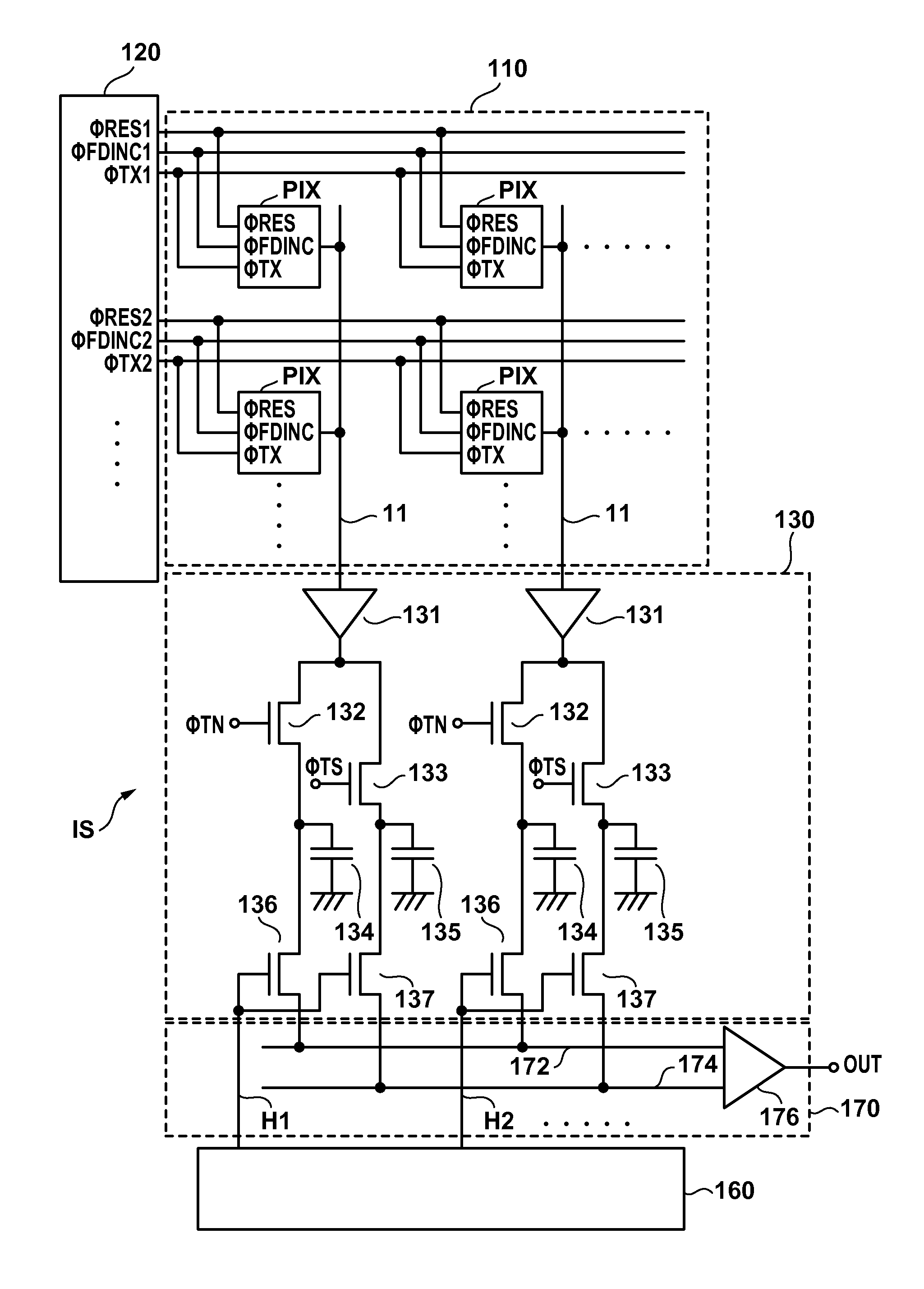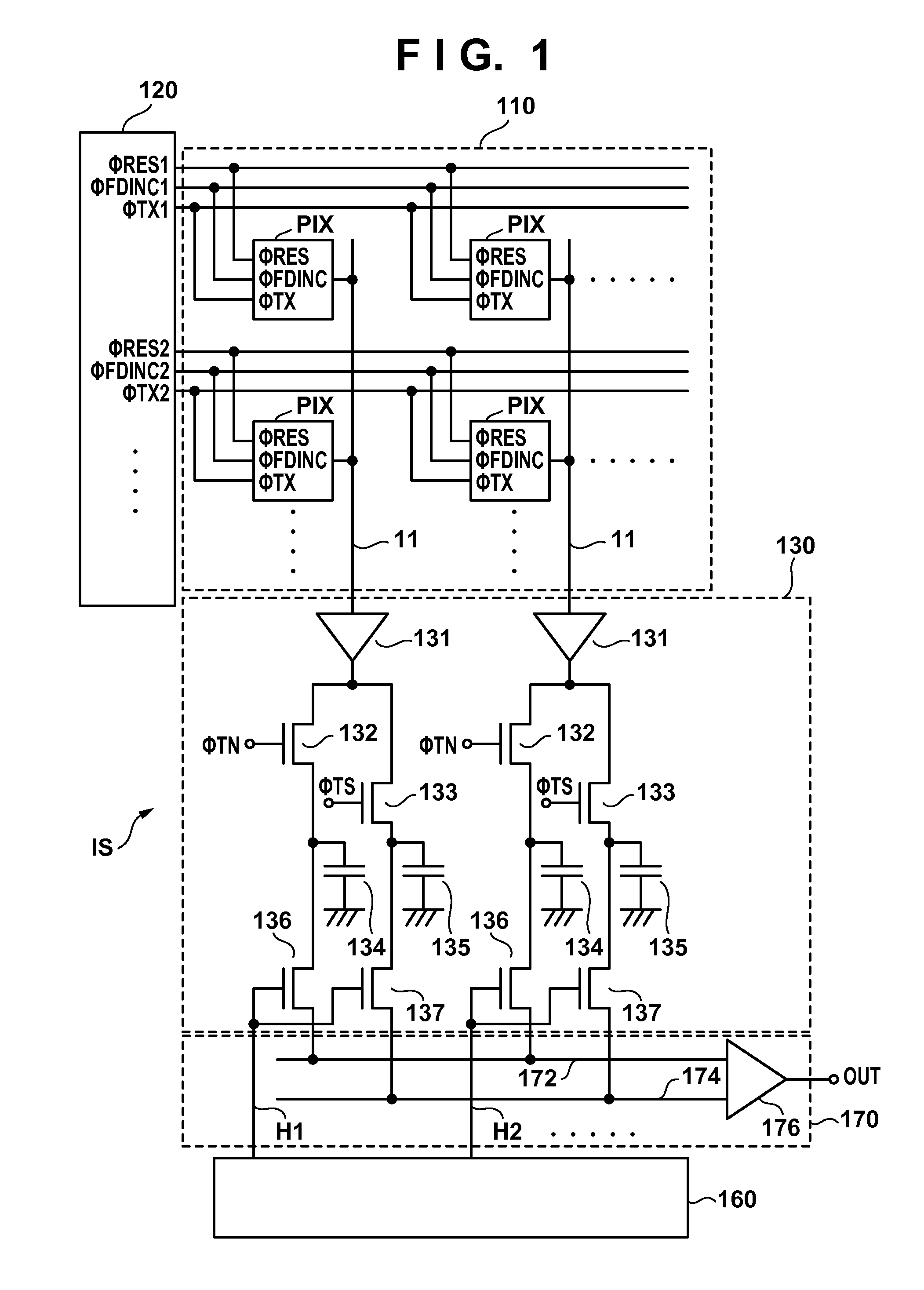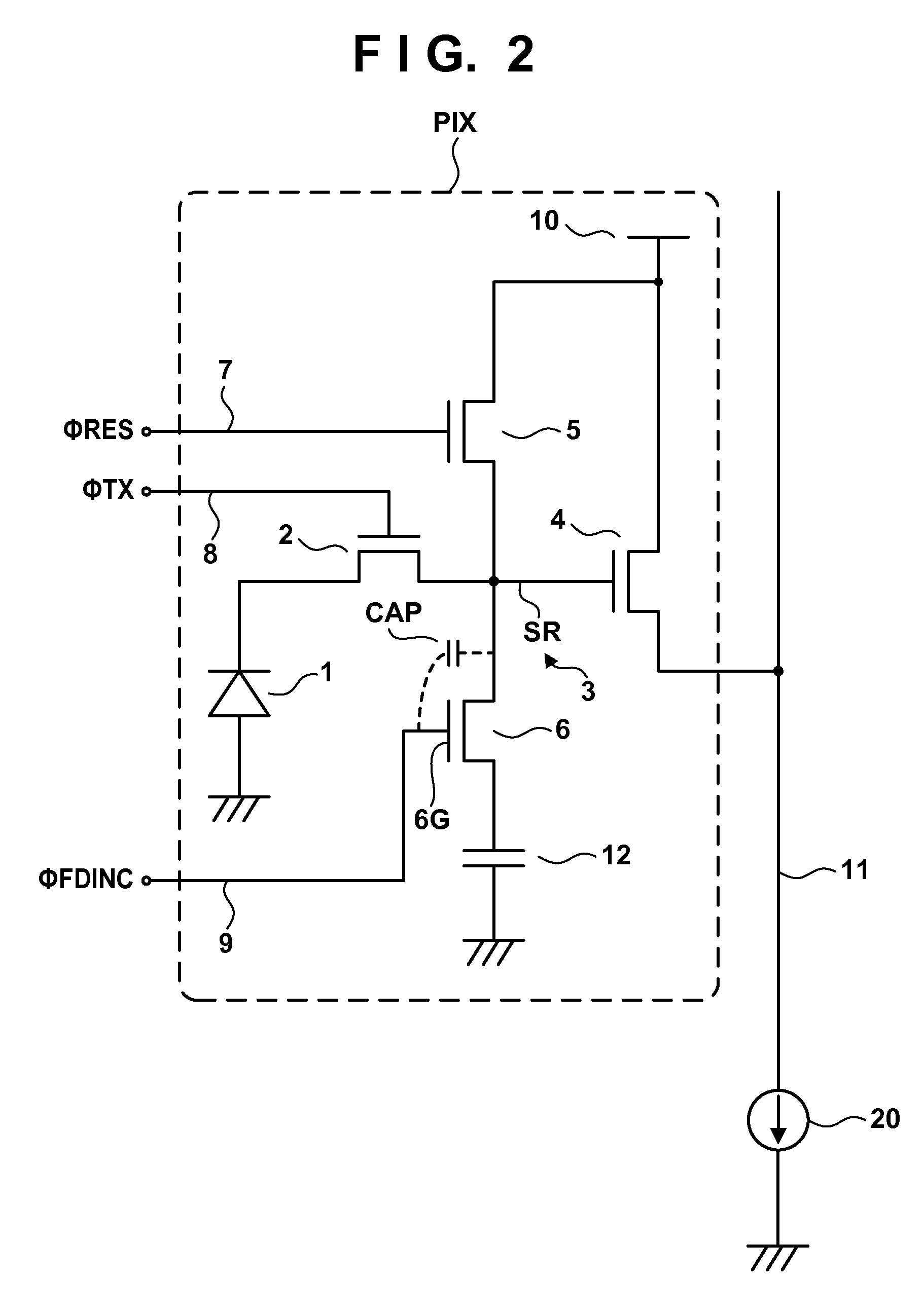Solid-state image sensor and camera with charge-voltage converter
a solid-state image sensor and charge-voltage converter technology, which is applied in the field of solid-state image sensors and cameras, can solve the problems of limited charge quantity that can be transferred to the fd serving as the charge-voltage converter, and achieve the effect of widening the dynamic range and increasing the charge quantity
- Summary
- Abstract
- Description
- Claims
- Application Information
AI Technical Summary
Benefits of technology
Problems solved by technology
Method used
Image
Examples
first embodiment
[0016]The circuit arrangement of a solid-state image sensor IS according to the present invention will be described with reference to FIG. 1. The solid-state image sensor IS includes a pixel array 110 in which a plurality of pixels PIX are arrayed to form a plurality of rows and a plurality of columns, and a readout unit 130 which reads out the signal of each pixel PIX from the pixel array 110. The solid-state image sensor IS also includes a row selection unit (control unit) 120 which selects a read target row in the pixel array 110, a column selection unit 160 which selects the signals read out by the readout unit 130, and an output unit 170 which outputs the signals selected by the column selection unit 160.
[0017]The row selection unit (control unit) 120 outputs a reset signal φRES, an extension signal φFDINC, and a transfer signal φTX. The reset signal φRES supplied to the ith row is denoted as φRESi (for example, φRES1 or φRES2). Similarly, the extension signal φFDINC supplied t...
third embodiment
[0040]If the electrode 6G′ is driven to high level, electrons move to the surface region of a semiconductor substrate SUB under the electrode 6G′, thereby forming an inversion layer SS like a channel in the MOS transistor, and a additional capacitance 12 is formed as the parasitic capacitance of the inversion layer SS. By forming the inversion layer SS, a capacitance value that can be seen from the gate of an amplifier transistor 4 will be a value obtained by adding the capacitance value of the additional capacitance 12 to the capacitance value of a charge-voltage converter 3. In the third embodiment, since the additional capacitance 12 is formed by the formation of the inversion layer SS and disappears by the disappearance of the inversion layer SS, the reset of the additional capacitance 12 is unnecessary.
[0041]The second semiconductor region SR2′ may be replaced by an element isolation ISO. In this case, a process of forming the second semiconductor region SR2′ in the formation r...
PUM
 Login to View More
Login to View More Abstract
Description
Claims
Application Information
 Login to View More
Login to View More - R&D
- Intellectual Property
- Life Sciences
- Materials
- Tech Scout
- Unparalleled Data Quality
- Higher Quality Content
- 60% Fewer Hallucinations
Browse by: Latest US Patents, China's latest patents, Technical Efficacy Thesaurus, Application Domain, Technology Topic, Popular Technical Reports.
© 2025 PatSnap. All rights reserved.Legal|Privacy policy|Modern Slavery Act Transparency Statement|Sitemap|About US| Contact US: help@patsnap.com



